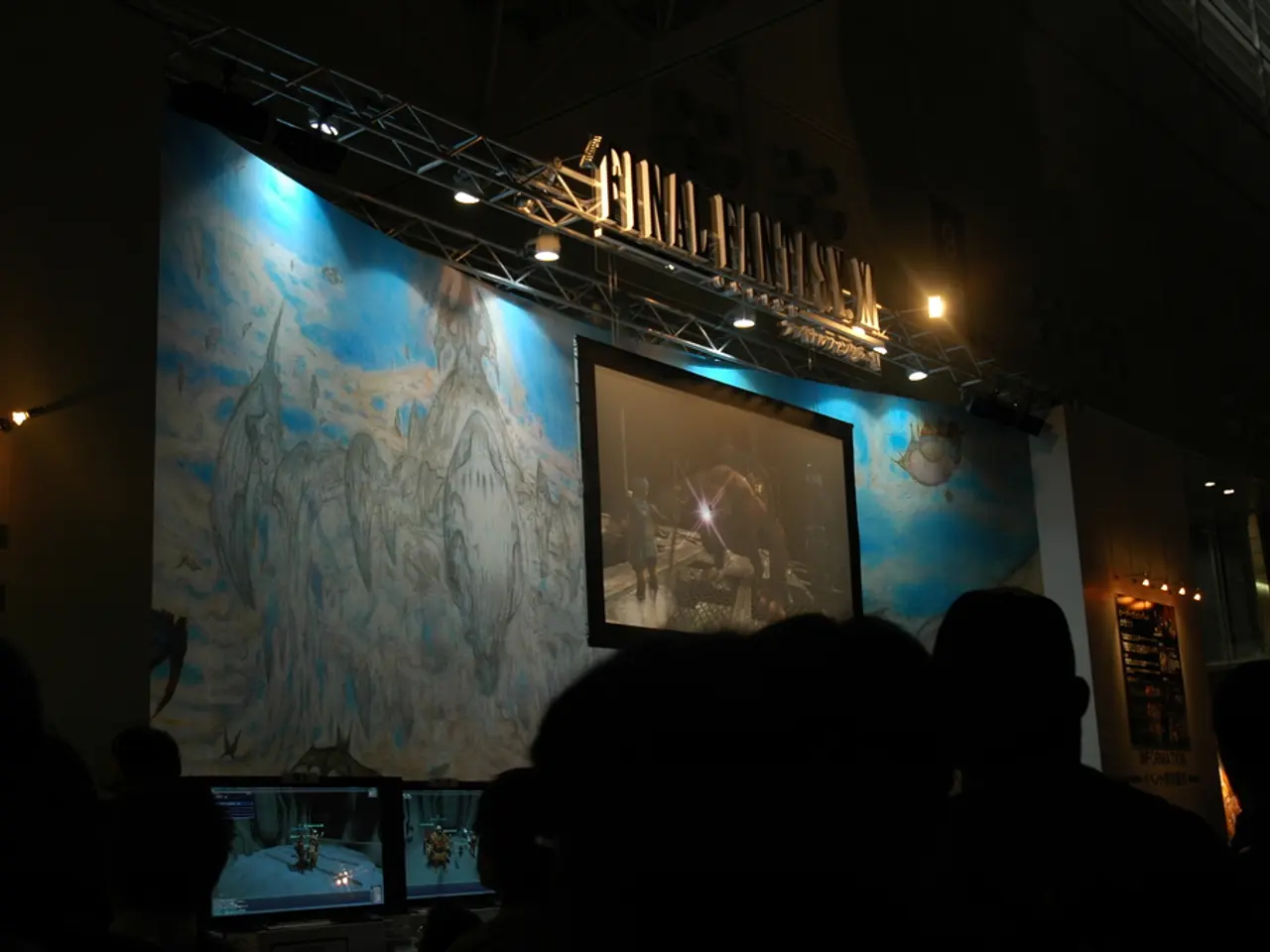Strategies to Boost Workplace Motivation and Productivity via Game-Based Approaches
In today's dynamic work environment, businesses are constantly seeking innovative ways to engage and motivate their employees. One such approach that is gaining traction is gamification, a strategy that combines elements of game design with business operations.
KFC Japan took a step in this direction with their "Shrimp Attack" campaign, an interactive video game that educated employees about new menu items. Microsoft, on the other hand, introduced a gamified language translation quality game for employees, using animated explainer videos. These initiatives not only make learning processes more fun and engaging but also help employees understand complex concepts better.
Large technology firms, consulting giants like Deloitte, and contact centers are leveraging this trend. For instance, Deloitte used the Badgeville onboarding platform to gamify learning for over 10,000 executives, incorporating animated content, badges, and diplomas to reward participation and completion. This strategy enhanced engagement and retention during training, improving the new hire experience.
Similarly, a multinational technology company implemented a gamified onboarding program called the "Quest for Success," which included animated video-based training and quizzes. Learners earned points and badges as they progressed through levels, with weekly team challenges fostering collaboration. This approach led to a 65% increase in onboarding completion and faster ramp-up to productivity.
Gamification strategies are not limited to onboarding. SAP, for example, used gamification to train its sales team, resulting in a 400% increase in usage and a 96% rise in community feedback. IBM's Innov8, a gamified business simulation, uses storytelling to teach employees about business processes, allowing them to engage in decision-making scenarios and align with company values.
Deloitte also implemented a gamified leadership training program using animated storytelling and saw a 50% reduction in the average time to complete the curriculum and a 46.6% increase in daily user return rates.
Animated role-playing simulations can further immerse employees in workplace scenarios, enhancing problem-solving skills and critical thinking. The interactive animated environment of gamified business simulations like IBM's Innov8 helps employees understand complex operations in an engaging manner.
In conclusion, the use of gamification and animated videos is proving to be a powerful tool in boosting employee engagement, training completion, and motivation. By structuring game mechanics into onboarding and ongoing learning programs, businesses can create immersive, engaging, and effective training and reward systems. These strategies not only make learning processes more fun and engaging but also help employees relate to a company's values and mission, fostering a sense of achievement and friendly competition.
- To enhance employee knowledge about fashion-and-beauty trends, businesses can create explainer videos with animated content, mimicking Deloitte's strategy for onboarding their executives.
- In the realm of lifestyle businesses, gamifying home-and-garden workshops could lead to increased participation and completion rates, similar to the "Quest for Success" program implemented by a multinational technology company.
- For food-and-drink establishments, gamification can be used to train employees on new menu items, resembling KFC Japan's "Shrimp Attack" campaign.
- In the sphere of relationships, pet care, and travel sectors, gamified role-playing scenarios may help employees better understand customer needs and expectations, much like how IBM's Innov8 uses storytelling for teaching employees about business processes.
- Gamification and animated videos can also be applied to car buying and shopping experiences, adding an element of excitement and engagement for customers as they navigate through various car models and accessories.




